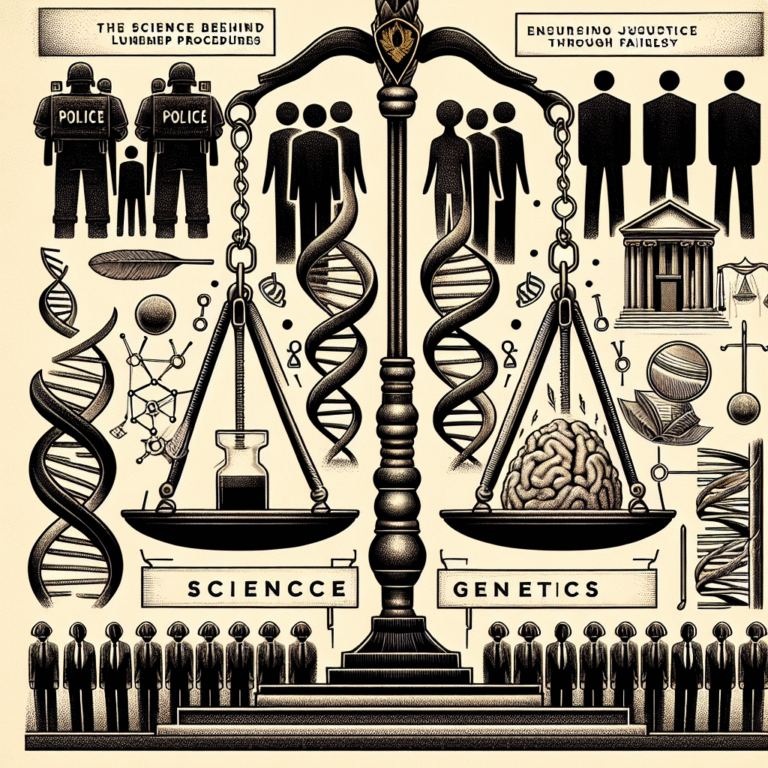
A staggering 93% of organizations have faced a data breach or cyberattack, a recent survey shows. This makes digital evidence forensics very important in today’s investigations.
The National Institute of Justice says digital evidence is “any information of probative value that is stored or transmitted in digital form.” As our lives get more digital, digital evidence’s role in legal cases grows too.
The trustworthiness of digital evidence depends a lot on the chain of custody and metadata in investigations. It’s key to keep digital evidence real and reliable in forensic analysis.
Key Takeaways
- Understanding the importance of digital evidence forensics in modern investigations.
- The critical role of chain of custody in maintaining the integrity of digital evidence.
- The significance of metadata analysis in forensic investigations.
- Common mistakes to avoid when handling digital evidence.
- The impact of digital evidence on legal proceedings.
The Critical Role of Digital Evidence in Modern Investigations
In today’s world, digital evidence is key in solving crimes. It has changed how we investigate and prosecute crimes. Digital evidence, as defined by the National Institute of Justice, includes any useful information stored or sent digitally.
Evolution of Digital Evidence in Criminal Cases
Digital evidence has grown a lot in criminal cases over the years. At first, it was mainly used for computer crimes. Now, it’s vital in many investigations, from cybercrime to theft and murder.
With new technology, digital evidence gets more complex. Investigators face a wide range of devices and platforms, each with important clues.
Types of Digital Evidence Sources
Digital evidence comes from different sources. Knowing these sources is key for good investigation and analysis.
Device-Based Evidence
Device-based evidence comes from physical devices like computers and phones. It includes files, emails, and more.
Network-Based Evidence
Network-based evidence comes from network traffic and logs. It has info on communications and access records.
| Evidence Type | Examples | Relevance |
|---|---|---|
| Device-Based | Computers, smartphones, external drives | Files, emails, application data |
| Network-Based | Network logs, traffic captures | Communication records, access logs |

Knowing the difference between device-based and network-based evidence is important. It helps investigators choose the right tools and methods. By understanding digital evidence types, investigators can improve their work.
Understanding Digital Evidence Forensics
Digital evidence forensics is key in today’s investigations. It needs a deep grasp of tech and legal rules. This field is not just about tech; it’s also about knowing the legal rules for digital evidence.
Core Principles of Forensic Digital Analysis
The heart of forensic digital analysis is keeping evidence safe. It’s about handling digital data in a way that stops tampering. Special tools and methods are used to make a forensic image of the data.
This image is then analyzed without changing the original evidence. The Scientific Working Group on Digital Evidence (SWGDE) sets rules for digital forensics. These rules help keep digital evidence safe during investigations.

The Intersection of Technology and Legal Requirements
The mix of tech and legal rules in digital evidence forensics is complex. As tech changes, legal rules must also evolve. Digital forensics experts need to keep up with new tech and legal standards.
This ensures their methods follow current laws and rules. They must know the legal rules for using digital evidence in court. They also need to understand how to collect, analyze, and keep digital data.
Digital Forensics Certification and Standards
Certification and following industry standards are vital in digital forensics. Groups like the International Society of Forensic Computer Examiners (ISFCE) offer certifications. For example, the Certified Forensic Computer Examiner (CFCE) shows a person’s skills in digital forensics.
Following these standards makes sure digital evidence is handled right. It also makes forensic experts more credible in court.
Legal Framework for Digital Evidence in the United States
The rules for digital evidence in U.S. courts are complex. They include federal laws and state-specific rules. This framework is key to making sure digital evidence is used right in court.
Federal Rules of Evidence for Digital Materials
The Federal Rules of Evidence (FRE) are the base for digital evidence in federal courts. FRE 901 and 902 cover how to prove digital evidence is real. FRE 803 and 804 talk about exceptions to the hearsay rule. Knowing these rules is vital for using digital evidence well.
- FRE 901: Authentication requirement
- FRE 902: Self-authentication
- FRE 803: Hearsay exceptions (e.g., business records)
- FRE 804: Hearsay exceptions when the declarant is unavailable
State-Level Variations in Digital Evidence Law
Even though the FRE sets a standard, states can have their own rules. For example, some states follow the Uniform Electronic Transactions Act (UETA). This affects how digital evidence is viewed. Legal experts need to know these differences, as they can change based on where a case is heard.
Landmark Court Decisions Shaping Digital Evidence Admissibility
Important court decisions have changed how digital evidence is accepted. Cases like Daubert v. Merrell Dow Pharmaceuticals and Kumho Tire Co. v. Carmichael have set key standards. These decisions highlight the need to grasp the legal standards for digital evidence.
Chain of Custody: Foundation of Digital Evidence Integrity
In the world of digital evidence, the chain of custody is key. It keeps evidence safe from tampering and loss. The National Institute of Justice says it’s vital for digital evidence integrity. It means documenting every step carefully to keep evidence safe from start to finish.
Defining Chain of Custody in Digital Contexts
The chain of custody is a record of who handled evidence when. In digital cases, it tracks every time evidence is accessed or changed. Keeping this record precise is essential for proving evidence is real and trustworthy.
Documentation Requirements and Protocols
Good documentation is the heart of a strong chain of custody. It includes:
- Initial acquisition documentation
- Transfer and access logs
- Storage and preservation methods
Initial Acquisition Documentation
When evidence is first collected, it’s important to document everything. This includes the date, time, location, and how it was collected. Also, note the evidence’s condition at the time.
Transfer and Access Logs
Every time evidence is moved or accessed, it must be logged. This includes who accessed it, when, and why. These logs keep the chain of custody clear and prevent unauthorized access.
Chain of Custody Software Solutions
Software solutions help make the chain of custody process easier. They automate documentation and track evidence handling. This makes it easier to follow legal rules.
These software solutions have many benefits. They improve accuracy, security, and efficiency. By using them, law enforcement and forensic experts can keep digital evidence safe during investigations.
Digital Evidence Collection Methodologies
Gathering digital evidence is key in today’s investigations. It needs careful methods to keep data safe. With new tech, we must update how we collect evidence to meet these changes.
Live Acquisition Techniques
Live acquisition gets data from a device that’s on. It’s great for catching data that disappears when a device turns off. We use special software to make a detailed copy of the device’s storage while it’s running.
Dead Box Forensics Approaches
Dead box forensics looks at devices that are turned off. It’s used when the device is not active or when the data isn’t changing. This method makes a complete copy of the device’s storage for lab analysis.
Remote Collection Challenges and Solutions
Collecting evidence remotely is tricky. It’s hard to keep data safe and follow rules from different places. We use network and cloud methods to solve these problems.
Network-Based Collection
Network-based collection catches data as it moves through a network. We use network taps or span ports to watch and collect network traffic.
Cloud-Based Collection
Cloud-based collection gets data from cloud storage. It needs help from cloud providers and deals with legal and tech issues to get and keep the data.
Knowing these methods is vital for digital forensics experts. As tech grows, keeping up with new ways to collect evidence is key to keeping investigations reliable.
Metadata: The Investigative Gold Mine
In digital forensics, metadata is key. It reveals details that might be missed. It tells us when and how digital evidence was made, changed, or deleted. This info is vital for investigations, helping to set timelines, check if evidence is real, and find where it came from.
Types of Metadata in Different File Formats
Metadata changes with each file type. Each one has special info that’s useful for investigations.
Document Metadata
Document metadata shows who made a document, when, and any changes. It helps investigators understand the document’s background.
Image and Video EXIF Data
EXIF data is in images and videos. It gives camera settings, location, and when it was taken. This info is key for checking if visual evidence is real.
Email Header Analysis
Email headers have metadata that shows where an email came from. By looking at these headers, investigators can find who sent spam or harmful emails.
Metadata Extraction Tools and Techniques
To get metadata, special tools and methods are needed. Forensic experts use ExifTool and Metadata Editor to pull and study metadata from different files. These tools are essential for finding hidden clues in investigations.
Detecting Metadata Manipulation and Tampering
Metadata can be changed or faked. Investigators must know how to spot these changes. They look for metadata that doesn’t match up, use hash values to check integrity, and use advanced tools to find tampering.
Understanding and using metadata helps investigators find important evidence. As digital evidence grows, so will the role of metadata in solving cases.
Authentication and Verification of Digital Evidence
In digital forensics, proving evidence is key. We use several methods to make sure evidence is real and hasn’t been changed. This ensures it’s what it says it is.
Hash Functions and Digital Fingerprinting
Hash functions are vital in creating digital fingerprints. They make a unique ID for each piece of evidence. Any change to the evidence will show up as a different ID.
This method helps check if digital evidence is intact.
Timestamp Analysis and Verification
Looking at timestamps is also important. It helps us understand when things happened. We check these timestamps to make sure they’re right.
We use different ways to do this, like comparing timestamps and using trusted sources.
Digital Signature Validation
Digital signatures prove who made something and if it’s been changed. We check if the signature is valid and matches the content. This keeps evidence safe during sharing or storage.
Write Blockers and Hardware Authentication
Write blockers keep data from being changed on a device. They help keep evidence as it was. Checking hardware ensures it’s real and hasn’t been messed with.
Both are key to keeping evidence trustworthy.
Digital Evidence Storage and Preservation Strategies
Digital evidence is now more common, and we need better ways to store and keep it safe. Keeping digital evidence in good shape is key. It helps ensure it can be used in court.
Physical Storage Solutions and Security
For digital evidence, we use secure places like locked rooms or safes. These places also have controls for the environment, like keeping the temperature right and preventing fires. Secure storage stops others from getting in or messing with the evidence.
Digital Storage Best Practices
When storing digital evidence, we use tools to keep data from changing. We store it on safe media and make extra copies for backup. Checking the data often helps make sure it’s not changed.
Long-term Evidence Preservation Challenges
Keeping digital evidence safe for a long time is hard. New technology can make old formats useless, and media can wear out. This can lead to losing access to the data.
Format Obsolescence
When technology changes, old file formats can become useless. It’s important to update and move data to new formats. Migration helps keep the data accessible.
Media Degradation
Media can get damaged over time, causing data loss. Checking the media often and moving data to new places helps avoid this problem.
| Storage Method | Security Features | Long-term Viability |
|---|---|---|
| External Hard Drives | Encryption, Access Controls | Medium |
| Cloud Storage | Multi-factor Authentication, Redundancy | High |
| Tape Storage | Secure Facilities, Data Encryption | High |
Common Mistakes in Digital Evidence Handling
Handling digital evidence needs careful attention. Small mistakes can greatly affect investigations and legal cases. The Scientific Working Group on Digital Evidence (SWGDE) offers guidelines for handling digital evidence. They focus on best practices for collecting, analyzing, and preserving evidence.
Collection Phase Errors
The collection phase is key in digital evidence handling. Mistakes here can damage the evidence’s integrity. Common errors include:
- Improper imaging techniques
- Failure to capture volatile data
- Overlooking possible evidence sources
Improper Imaging Techniques
Wrong imaging methods can lead to bad or lost evidence. For example, not using a write-blocker can change the data. The SWGDE suggests using tested tools and methods to keep the evidence intact.
Failure to Capture Volatile Data
Volatile data, like RAM contents, is vital in many cases. Missing this data can mean losing important evidence. Investigators should use the right tools to get volatile data before it’s gone.
Overlooking Possible Evidence Sources
Missing evidence sources can make investigations incomplete. Investigators should look at all possible sources of digital evidence. This includes cloud storage, mobile devices, and IoT devices.
Chain of Custody Failures
Keeping a proper chain of custody is key for digital evidence to be accepted in court. Failures here can make the evidence questionable. Common issues include bad documentation, wrong storage, and unauthorized access.
Analysis and Interpretation Mistakes
Understanding digital evidence needs special skills and knowledge. Mistakes here can lead to wrong conclusions. Investigators should keep up with new tools and methods to avoid errors. Using advanced digital forensics tools helps in accurate analysis and interpretation.
In conclusion, careful handling of digital evidence is vital to avoid common mistakes. By knowing these mistakes and following best practices, investigators and legal professionals can ensure digital evidence’s integrity and admissibility in legal cases.
The Psychology of Digital Crime and Evidence Analysis
The study of digital crime’s psychology is complex. It needs a deep grasp of human behavior and why people act a certain way. Investigators look at both the technical and psychological sides of digital evidence.
Behavioral Analysis Through Digital Footprints
Looking at digital footprints helps understand why people commit crimes. It involves studying online activities and communication patterns. This helps investigators piece together what happened during a crime.
Suspect Profiling Using Digital Evidence
Creating a suspect profile is key in digital crime solving. It’s based on their digital activities and behaviors. This includes their online presence and social media interactions.
Cognitive Biases in Digital Evidence Interpretation
Cognitive biases can lead to wrong conclusions when interpreting digital evidence. Investigators must be aware of these biases. They need to ensure their analysis is fair and based on the evidence.
Understanding digital crime’s psychology helps digital forensics professionals. They can better analyze evidence, find suspects, and solve crimes. Behavioral analysis is a big part of this.
Advanced Digital Evidence Analysis Techniques
Digital evidence is getting more complex. Investigators need advanced methods to find important clues. Digital forensics has grown, with many new ways to analyze digital data.
File Carving and Data Recovery
File carving helps find files on damaged devices without file system info. It’s key for fixing broken file systems. Data recovery is also vital, getting data back from damaged devices.
Timeline Analysis and Event Reconstruction
Timeline analysis sorts events by their digital timestamps. It helps figure out what happened in a crime or incident. Event reconstruction uses this to create a clear story of what happened.
Cross-Drive Analysis and Data Correlation
Cross-drive analysis looks at data from many devices for patterns. It’s useful when dealing with several devices. Data correlation links data from different sources for a full picture.
Memory Forensics
Memory forensics checks a computer’s RAM for useful info. It can find malware, encryption keys, and more, not seen on disk.
According to
“Digital Forensics: A Guide to Understanding Digital Evidence” by John Sammons, ‘advanced digital evidence analysis is very important. It helps find key information that might be hidden.’
Using these advanced techniques, investigators can understand complex cases better. They can find important evidence that was hard to find before.
Presenting Digital Evidence in Court
Showing digital evidence in court is a tough job. It needs careful planning and knowing both tech and law well. As courts use digital evidence more, being good at showing this evidence is key for lawyers and digital forensics experts.
Expert Witness Testimony Preparation
Expert witnesses are vital in making complex digital evidence clear to the court. They must be well-prepared to explain tech details simply. This means knowing the evidence well and being ready for tough questions.
Getting ready involves studying the case, thinking about questions from both sides, and practicing how to speak clearly.
Visual Presentation Strategies for Technical Evidence
Visual aids make digital evidence easier to understand for judges and jurors. Good strategies include using diagrams, timelines, and interactive displays. For example, a timeline can show the order of events in a case.
Addressing Defense Challenges to Digital Evidence
Defense lawyers often question the digital evidence’s trustworthiness. To face these doubts, being ready to talk about the evidence’s history, how it was collected and analyzed, and the risk of tampering is key.
Daubert Standard Challenges
The Daubert standard says expert opinions must be based on solid facts and reliable methods. To beat Daubert challenges, experts need to show their methods are sound and relevant. This often means explaining the science behind their analysis.
Authentication Challenges
Authentication challenges are about proving digital evidence is real and hasn’t been changed. This can be done by explaining how evidence is checked, like through hash value comparisons and using write-blockers during data collection.
| Challenge Type | Common Issues | Countermeasures |
|---|---|---|
| Daubert Standard | Lack of reliability, insufficient facts | Demonstrate scientific basis, explain methodology |
| Authentication | Evidence tampering, alteration | Hash value verification, use of write-blockers |
Emerging Trends in Digital Forensics
Digital forensics is changing fast. New technologies and complex crimes are driving these changes. We now analyze digital evidence in new ways.
AI and Machine Learning in Evidence Analysis
Artificial Intelligence (AI) and Machine Learning (ML) are changing digital forensics. These technologies can quickly go through lots of data. They find patterns and oddities that humans might miss.
This makes digital forensic work more efficient and accurate.
IoT Devices as Evidence Sources
Internet of Things (IoT) devices are becoming more common. They offer new chances for digital forensics. But, getting data from these devices is tricky.
It needs special tools and methods.
Cryptocurrency and Blockchain Forensics
Cryptocurrencies are growing, so are crimes related to them. Blockchain forensics helps track these crimes. It’s about understanding blockchain and cryptocurrency.
Cloud Forensics Advancements
Cloud forensics is key as more data goes to the cloud. Investigators face new challenges in cloud environments. They need better tools and methods for cloud-based evidence.
Digital forensics is always evolving. Experts must keep up with new trends. New technologies and methods are essential for tackling complex digital crimes.
Conclusion
Digital evidence forensics is key in today’s investigations. As tech grows, so does the need for experts in digital forensics. They help analyze and present digital evidence.
Digital forensics covers many tasks. It includes keeping evidence safe and understanding metadata. It also means avoiding mistakes. This helps investigators present digital evidence well in court.
Digital forensics experts must keep learning. They need to know the newest tools and methods. This helps them support justice in their work.
Digital evidence forensics is essential in today’s investigations. Its role will grow as technology gets better. By keeping up with new tech and practices, we can use digital evidence to get fair outcomes.















